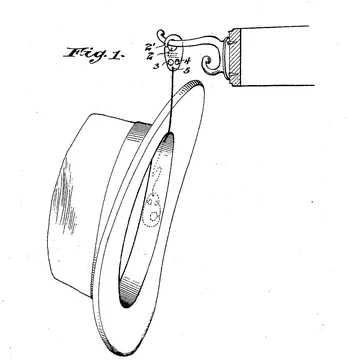
A perennial question in disputes about late disclosures is whether the demanding FRCP 16 "good cause" standard applies, which hinges on diligence, or whether the more forgiving Pennypack factors apply.
When it comes to case narrowing, there seems to be a building trend that the good cause standard applies, not the Pennypack factors. We've seen that multiple times when it comes to a plaintiff's decision to drop claims, and on Wednesday, Judge Burke issued a detailed opinion finding that good cause is likewise required to revise a defendant's election of prior art references.
In State Farm Mutual Automobile v. Amazon.com, Inc., C.A. No. 22-1447-CJB (D. Del.), the Court ordered the defendant to cut back to no more than six obviousness combinations per patent, which the defendant did. Id., D.I. 231 at 1-2. In its expert reports, however, the defendant asserted different combinations, formed from a subset of the references used for the original combinations. Id. at 2-4.
The Court found that the good cause standard, not the Pennypack factors, governs a late attempt to revise prior art elections:
As a threshold matter, the parties dispute the standard that applies to the instant Motion. Plaintiff asserts that with the Bederson Report, Defendants violated paragraph 6(h)(iv) of the Scheduling Order and thus, pursuant to Federal Rule of Civil Procedure 16, Defendants must show good cause for asserting the additional combinations in the Bederson Report. . . . Meanwhile, Defendants argue that Federal Rule of Civil Procedure 37 and the Pennypack factors should apply to the parties’ dispute. . . . The Court sides with Plaintiff here. If after serving the Final Election, Defendants had thereafter served an amended Final Election asserting all of the same additional combinations that are now found in the Bederson Report, then such an amendment would have clearly violated paragraph 6(h)(iv). And here, the Bederson Report accomplishes the exact same thing, just in a slightly different format. In other words, with the Bederson Report, Defendants are in fact asserting “more than six prior references against each patent” (references that are different than those selected in their “Final Election”)just what paragraph 6(h)(iv) prohibits. (D.I. 34 at 4) Because service of the Bederson Report amounts to a violation of the Court’s Scheduling Order, Defendants must therefore show good cause to support the inclusion of these additional combinations.
Id., at 2-3.
The Court found that there was no good cause here, rejecting the defendants' argument that they should be permitted to assert new combinations as long as they consist of a subset of prior references:
Although Defendants attempt to argue that the additional combinations do not present any new theories since they constitute a subset of previously disclosed combinations, . . . the Court cannot agree. . . . Defendants’ violation of the Scheduling Order in asserting the additional combinations is problematic. For instance, as Plaintiff points out, Defendants’ current reliance on subsets of the six combinations could have a very real impact on Plaintiff’s responsive theories as to issues such as motivation to combine. . . . When an accused infringer removes a particular reference from an obviousness combination, that could impact how a patentee prepares its responsive validity position—since the patentee may well have been previously targeting the now-removed reference as a weak link in its opposition’s invalidity case, and thereafter would have to completely recalibrate its position on this score. Moreover, Defendants’ view—i.e., that it is always permissible for an expert to rely on multiple different subsets of a defendant’s prior final election of combinations—would create havoc and render meaningless the concept of a “final” election. It might also “incentivize[ parties] to list every known prior art reference in a[ final] elected combination and [then] wait until expert discovery to disclose which [subset of those] reference(s) they actually intend to rely on.”
Id. at 4-5.
The Court did indicate that one specific kind of "subset" might be permissible. In one instance, the defendants argued that one of the references in a multiple-reference combination was intended to be used only for motivation to combine. The Court held that, if that is true, then there is no scheduling order violation:
One exception here relates to the '585 patent. There, Defendants explain (and Plaintiff does not dispute) that while the Alexa Silver reference was expressly recited in each of the six combinations in Defendants’ Final Election, Defendants were only relying on Alexa Silver as evidence showing why there would have been a motivation to combine the other references listed in Defendants’ claim charts and in the Bederson Report. . . . In other words, there Defendants were not relying on Alexa Silver to show the prior disclosure of a relevant claim element as part of an invalidity argument. If that is indeed the case, then the combinations at issue in the Bederson Report regarding the '585 patent that match up with the six combinations in the Final Election (minus Alexa Silver) would not be in violation of the Scheduling Order and would not be untimely-disclosed combinations.
Id. at 4-5 n.7. Of course, if that is a party's intent, the safest path would be to not list the motivation-to-combine reference at all in the case narrowing disclosure.
If you enjoyed this post, consider subscribing to receive free e-mail updates about new posts.

